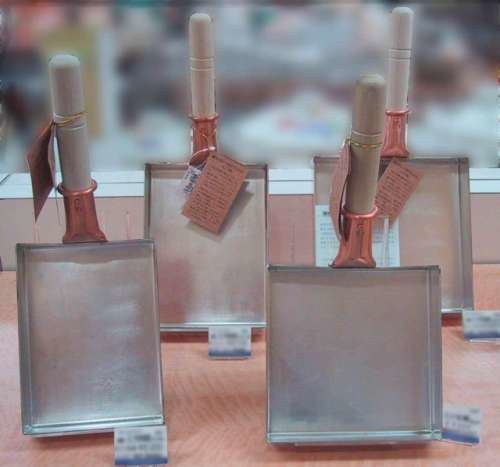 | ||
Tamagoyakinabe (Japanese: 玉子焼き鍋; たまごやきなべ, literally: omelette-pan) or makiyakinabe ("roll-bake-pan") is a square or rectangular cooking pan used to make Japanese style rolled omelettes. It is also known as tamagoyakiki (玉子焼き器; たまごやきき, literally: tool to make omelettes).
Contents
In Japanese cuisine rolled omelettes are made as rectangular thin omelettes and then rolled into a cylindrical or elongated cube shape using Japanese kitchen chopsticks. To obtain a roll with a constant diameter over the entire lengths, the thin omelette should be of rectangular shape. To obtain this shape a special rectangular frying pan is used.
Dimensions
The pans usually have a width of 10 to 35 cm and are often made of aluminium or cast iron. The best type is considered to be heavy copper coated with tin, although care has to be taken to avoid damage to the pan due to the low melting point of tin. A cheaper, Teflon coated pan is available in many stores. The depth of the pans is usually from 3 cm to 4 cm. Their weights are usually from 0.5 kg to 2.5 kg.
There are three types of makiyakinabe: Kantō-type, Kansai-type and Nagoya-type. The Kantō-type pans are squared. The Kansai-type pans are tall-and-thin rectangles. The Nagoya-type pans are short-and-wide rectangles.
The lid
The makiyakinabe is usually used with a thick wooden lid that is used to help people flip the omelette. One could use a platter instead though the task is said to be much easier with the lid.
Uses
Tamagoyaki (Japanese omelette) is also a common ingredient for sushi. The egg, mixed with shrimp paste and sometimes paste of yam, is heated in the pan until it is pliable.
